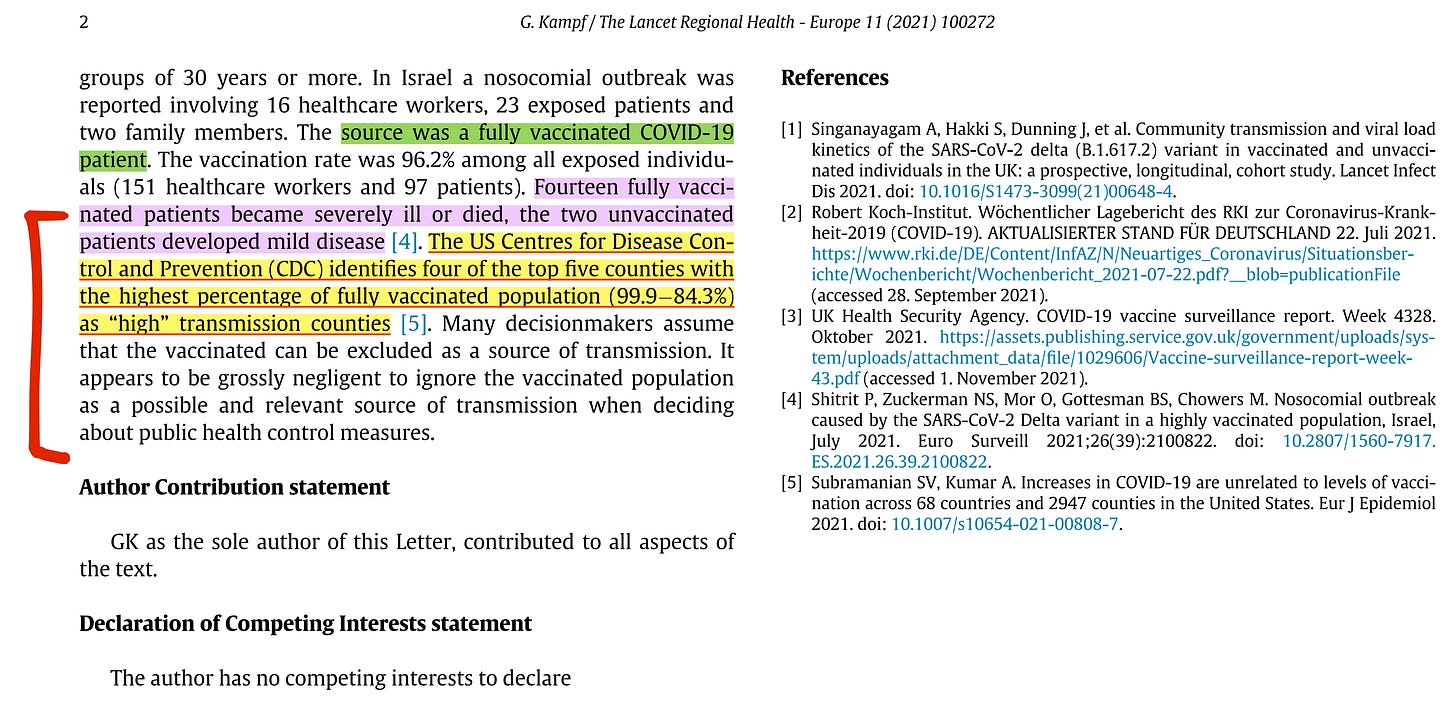Consistent Pattern of Paradoxical Failure: Lancet Regional Health Europe 2021 Dec
European Journal of Epidemiology (Sep2021) is perfectly consistent with Lancet Regional Health Europe (Dec2021)
The Gibraltar Paradox: More vaccinations = more infection
Have you noticed that the British territory of Gibraltar has essentially 100% vaccinated adult population and yet supposedly has such a high rate of “Covid” that the government has “cancelled” all holiday celebrations and Christmas gatherings?
According to the news (uk.news.yahoo 2021Nov18) , “The Rock has administered at least 94,469 vaccine doses so far which is enough to have fully vaccinated 140.2% of the country’s population.”
The Ireland Paradox: More vaccinations = more infection
“Ireland is 91% Vaccinated and Covid is soaring…”
“Of 474 deaths between April and October, 44% were fully vaccinated”
Read this 1-page dense summary from Lancet Regional Health Europe 2021 Dec (open access; included below)
Data from this new report are perfectly consistent from the article I reviewed previously from European Journal of Epidemiology (30Sep2021), supporting the general conclusion that the vaccines are a near-complete failure for the prevention of cases, reduction of viral load and transmission.
Let’s review these quoted excerpts; you also have access to the 2-page PDF article
In the UK it was described that secondary attack rates among household contacts exposed to fully vaccinated index cases was similar to household contacts exposed to unvaccinated index cases (25% for vaccinated vs 23% for unvaccinated). 12 of 31 infections in fully vaccinated household contacts (39%) arose from fully vaccinated epidemiologically linked index cases. Peak viral load did not differ by vaccination status or variant type.
In Germany, the rate of symptomatic COVID-19 cases among the fully vaccinated (“breakthrough infections”) is reported weekly since 21. July 2021 and was 16.9% at that time among patients of 60 years and older. This proportion is increasing week by week and was 58.9% on 27. October 2021 providing clear evidence of the increasing relevance of the fully vaccinated as a possible source of transmission.
A similar situation was described for the UK. Between week 39 and 42, a total of 100.160 COVID-19 cases were reported among citizens of 60 years or older. 89.821 occurred among the fully vaccinated (89.7%), 3.395 among the unvaccinated (3.4%). One week before, the COVID-19 case rate per 100.000 was higher among the subgroup of the vaccinated compared to the subgroup of the unvaccinated in all age groups of 30 years or more.
In Israel a nosocomial outbreak was reported involving 16 healthcare workers, 23 exposed patients and two family members. The source was a fully vaccinated COVID-19 patient. The vaccination rate was 96.2% among all exposed individuals (151 healthcare workers and 97 patients). Fourteen fully vaccinated patients became severely ill or died, the two unvaccinated patients developed mild disease.
The US Centers for Disease Control and Prevention (CDC) identifies four of the top five counties with the highest percentage of fully vaccinated population (99.9–84.3%) as “high” transmission counties.
Many decision-makers assume that the vaccinated can be excluded as a source of transmission. It appears to be grossly negligent to ignore the vaccinated population as a possible and relevant source of transmission when deciding about public health control measures.
Given the evidence that the Cv19 vaccination can promote inflammation while reducing immune defense (Cell Discovery 2021 Oct), we cannot be surprised that that the Cv19 vaccination would lead to neutral or negative clinical consequences, specifically no protection or more infection.
Sources:
Christmas cancelled in Gibraltar - the ‘most vaccinated’ place in the world. uk.news.yahoo.com/christmas-cancelled-gibraltar-most-vaccinated-202159349.html 18 November 2021
https://citizenfreepress.com/column-2/ireland-is-91-vaccinated-and-cases-are-soaring/
https://www.irishtimes.com/news/health/four-in-10-new-covid-19-cases-are-among-vaccinated-people-data-shows-1.4716340
https://doi.org/10.1016/j.lanepe.2021.100272




